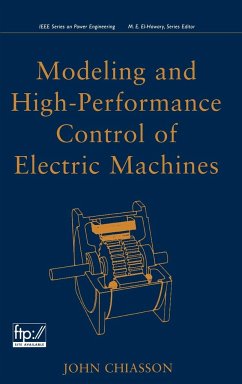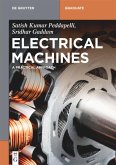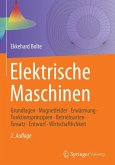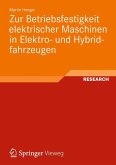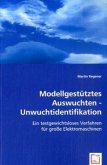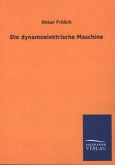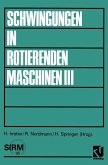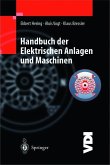Learn the modeling and control of electric machines
This textbook introduces the reader to both the modeling and control of electric machines. The direct current (DC) machine and the alternating current (AC) machines (induction, PM synchronous, and BLDC) are all covered in detail. The author emphasizes control techniques used for high-performance applications, specifically ones that require both rapid and precise control of position, speed, or torque. The reader discovers how to derive mathematical models of the machines based on the elementary physics of electricity and magnetism, and how the resulting models can be used to design control algorithms that achieve high performance.
Modeling and High-Performance Control of Electric Machines takes a unique approach by including special features, such as:
* Emphasis on elementary electricity and magnetism to make detailed derivations of the mathematical models of machines
* Figures drawn in perspective to illustrate the geometric layout of machines
* Application of mathematical models of machines in state-space form to develop high-performance control algorithms.
* The connection between space vector and state-space models
* Use of modern systems theory in the form of state feedback, state observers, least-squares parameter identification, and input-output linearization as applied to the control of electric machines
* Includes end-of-chapter problems sets, references, and appendices
* A solutions manual is available on an accompanying ftp site along with the Simulink(r) files for all simulation problem
Graduate students studying power and control will gain a sophisticated understanding of how electric machines operate and how they are mathematically modeled and controlled. Practicing engineers within industry will find this a highly readable text on the operation, modeling, and control of electric machines.
Modeling and High Performance Control of Electric Machines introduces you to both the modeling and control of electric machines. The direct current (DC) machine and the alternating current (AC) machines (induction, PM synchronous, and BLDC) are all covered in detail. The author emphasizes control techniques used for high-performance applications, specifically ones that require both rapid and precise control of position, speed, or torque. You ll discover how to derive mathematical models of the machines, and how the resulting models can be used to design control algorithms that achieve high performance. Graduate students studying power and control as well as practicing engineers in industry will find this a highly readable text on the operation, modeling, and control of electric machines.
An Instructor s Manual presenting detailed solutions to all the problems in the book is available from the Wiley editorial department.
An Instructor Support FTP site is also available.
Hinweis: Dieser Artikel kann nur an eine deutsche Lieferadresse ausgeliefert werden.
This textbook introduces the reader to both the modeling and control of electric machines. The direct current (DC) machine and the alternating current (AC) machines (induction, PM synchronous, and BLDC) are all covered in detail. The author emphasizes control techniques used for high-performance applications, specifically ones that require both rapid and precise control of position, speed, or torque. The reader discovers how to derive mathematical models of the machines based on the elementary physics of electricity and magnetism, and how the resulting models can be used to design control algorithms that achieve high performance.
Modeling and High-Performance Control of Electric Machines takes a unique approach by including special features, such as:
* Emphasis on elementary electricity and magnetism to make detailed derivations of the mathematical models of machines
* Figures drawn in perspective to illustrate the geometric layout of machines
* Application of mathematical models of machines in state-space form to develop high-performance control algorithms.
* The connection between space vector and state-space models
* Use of modern systems theory in the form of state feedback, state observers, least-squares parameter identification, and input-output linearization as applied to the control of electric machines
* Includes end-of-chapter problems sets, references, and appendices
* A solutions manual is available on an accompanying ftp site along with the Simulink(r) files for all simulation problem
Graduate students studying power and control will gain a sophisticated understanding of how electric machines operate and how they are mathematically modeled and controlled. Practicing engineers within industry will find this a highly readable text on the operation, modeling, and control of electric machines.
Modeling and High Performance Control of Electric Machines introduces you to both the modeling and control of electric machines. The direct current (DC) machine and the alternating current (AC) machines (induction, PM synchronous, and BLDC) are all covered in detail. The author emphasizes control techniques used for high-performance applications, specifically ones that require both rapid and precise control of position, speed, or torque. You ll discover how to derive mathematical models of the machines, and how the resulting models can be used to design control algorithms that achieve high performance. Graduate students studying power and control as well as practicing engineers in industry will find this a highly readable text on the operation, modeling, and control of electric machines.
An Instructor s Manual presenting detailed solutions to all the problems in the book is available from the Wiley editorial department.
An Instructor Support FTP site is also available.
Hinweis: Dieser Artikel kann nur an eine deutsche Lieferadresse ausgeliefert werden.

